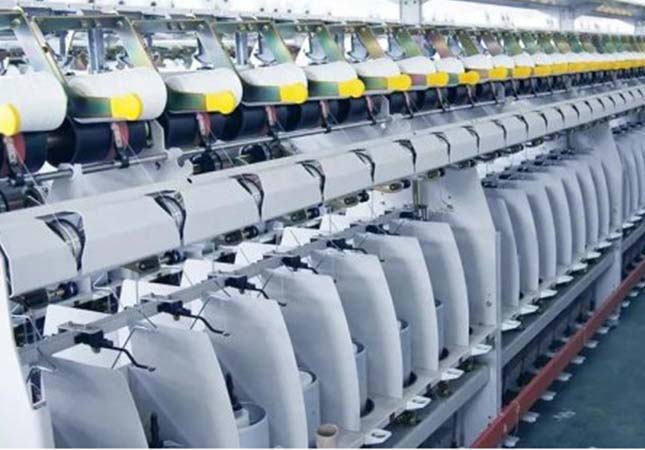Future Development Of Weaving Machine
The weaving machine, also referred to as cotton looms or cloth weaving looms, traces its origins back to the squat loom, commonly known as the waist loom, which rested on the ground. The process involved several steps: first, the weaver would press their feet onto the warp stick of the loom while tightly beating the weft with a wooden knife held in their right hand. Simultaneously, they would guide the weft thread with their left hand. Since it lacked a frame design, one end of the winding beam had to be tied around the waist, while the other end of the warp beam required pressure from both feet, ensuring the fabric remained taut. To create a shed, the warp yarn was divided into two parts, odd and even, using a warp separating stick, and then lifted with the heald bar. The weft was inserted using a bone needle and beaten down with the wooden knife.
The Development of Shuttleless Loom
Since the 1990s, extensive technological research has been conducted on the invention of shuttleless looms, which gradually entered the international market from the 1950s. Starting from the 1970s, numerous innovative types of shuttleless looms have been successfully introduced to the main market. As advanced weaving machines, these shuttleless looms have revolutionized the efficiency of looms and the fabric industry, yielding remarkable outcomes. Consequently, there has been a prominent trend of replacing traditional shuttle looms with shuttleless ones, with many developed countries now boasting shuttleless looms comprising approximately 80% of their total loom share.
The evaluation of a weaving machine's efficacy relies on the production level of fabrics it generates. However, achieving optimal fabric production efficiency is not solely reliant on increasing the working speed of the machine. Instead, it is the overall efficiency of the loom itself that plays the most significant role in enhancing production speed. Simply boosting the working speed of a machine is unrealistic without addressing the efficiency of the loom.
The Optimization Of Weaving Efficiency
In the present scenario, the enhancement of working efficiency in weaving machines is a significant concern. Several factors impact loom efficiency, such as the time consumed by stoppages caused by warp and weft mechanism failures, as well as the duration required for equipment maintenance. However, the replacement and maintenance of various equipment during the production process generally do not consume excessive amounts of time. Consequently, the key to optimizing weaving machine efficiency lies in reducing the time spent on replacing warp and weft parts, as well as minimizing production stoppages.
Advancements in weaving preparation technology have allowed yarns to endure higher stress levels in high-speed weaving environments. This has led to the maturity of shuttleless looms, enabling increased weft insertion rates. Furthermore, even with good-quality yarn, if on-machine process parameters such as loom speed, warp tension, and shed geometry are not appropriately set, there can be an increase in warp and weft breakage rates, resulting in decreased fabric quality. These two examples highlight the crucial role played by yarn quality and loom parameters in optimizing weaving machine efficiency.
To address these challenges, the air-jet loom navigation system has been developed. This system equips weaving machines with automatic detection and control of process parameters during operation, expanding and strengthening the capabilities of simple parameter setting, automatic optimization, and specific, simplified configuration of various settings on the machine.

In summary, reducing the time required for replacing parts and minimizing production stoppages, alongside improving yarn quality and correctly setting process parameters, are vital for achieving optimal efficiency in weaving machines. The integration of technologies like the air-jet loom navigation system further facilitates the automatic control and optimization of process parameters, leading to more precise and streamlined weaving machine operation.
With the ongoing transition from shuttle weaving looms to shuttleless weaving looms, the rapier weaving machine is poised to become the primary production machine for woven fabrics. SUNTECH Textile Machinery, a prominent weaving machine manufacturer, offers cutting-edge solutions in this field. Our weaving machines are built upon the foundation of traditional high-speed rapier looms and have been updated to meet modern requirements. Currently, the rapier weaving machine stands as the most widely utilized and flexible shuttleless loom on the market.
Comments
Post a Comment